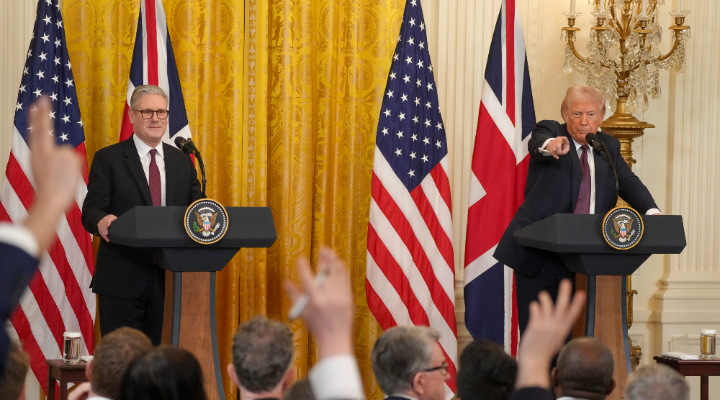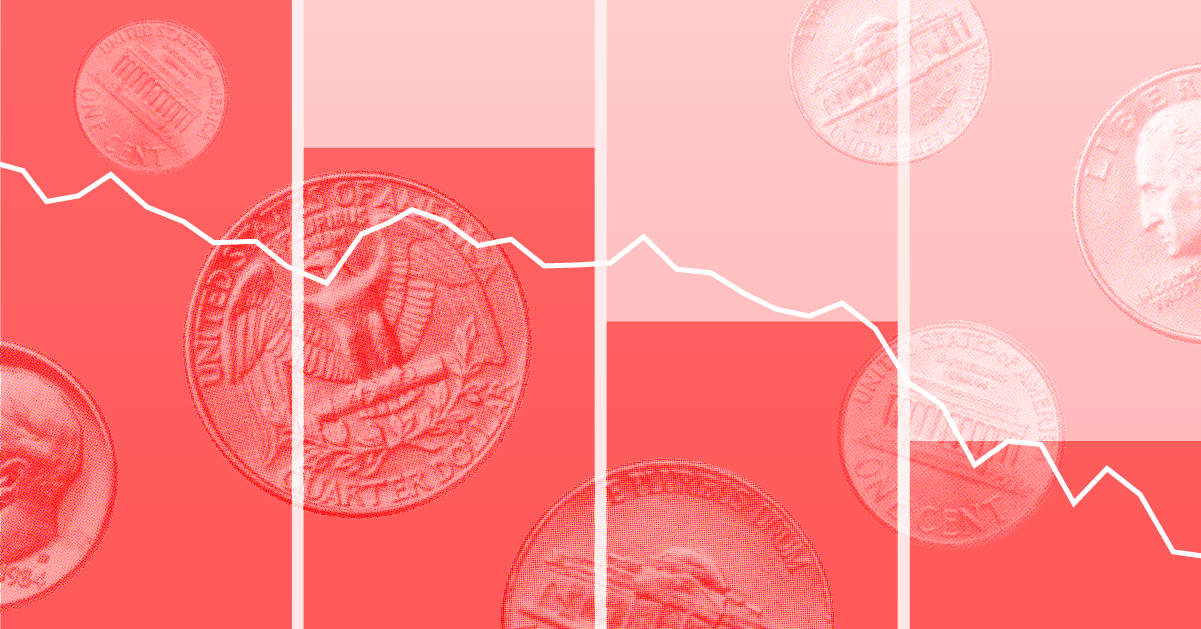Sunniva Kolostyak: Welcome to Morningstar. Today I am joined by Edmund Harriss, the CIO of Guinness Global Investors. Edmund, thank you very much for being here.
Edmund Harriss: Hi, very nice to see you.
SK: So, you also manage the Asian Equity Income fund, and I would love to start there. Would you like to give me an overview of the fund and how you are positioning yourself in the current environment?
EH: Certainly. So, the Asian Equity Income Fund is really focused on buying good-quality businesses that have sustainable competitive advantages, have demonstrated that through superior returns on capital, stronger cash flow and profitability as a consequence, and that underpins a cash stream that funds the dividend. So, we are not specifically looking to generate income. We are looking for good businesses that are profitable, reinvesting in their business, but generating more cash than they need. And that has, I think, created an interesting investment strategy. We have a pretty well-defined view on what constitutes a good-quality company, which is returns on capital, sustained over time, year after year after year, delivers a high probability that these returns will persist. So, when we are looking to invest in these companies, does the current market price reflect that likely persistence of returns? So, we are looking at it from the point of view of the business first operating in a higher-growth region, as opposed to looking at a higher-growth region and then trying to find something that will reflect that.
So, we have a portfolio of 36 companies, equally weighted with the same investment proposition, returns of the past likely to persist, but priced as if they won't. There are different stories underlying that, different sectors, different countries, different themes that drive that. But all of them with this similar investment case, and all of them throwing off extra cash that they do not need, which supplies you with a dividend stream. And I think what makes it really interesting for investors is that these companies aren't paying out significantly higher proportion of their earnings than their developed market counterparts, but they are trading at much lower valuations. So, you are getting good businesses, a decent dividend stream paying out about half their earnings, but a higher yield because you are paying less per dollar of income. And that has delivered a very reasonable and almost predictable returns profile over time, which has been driven by underlying profitability and that dividend stream. We have had no help from valuations or re-valuations of stocks. It's fundamentally driven.
SK: So then let's talk about the economic environment in Asia and maybe China in particular. How do you see that developing at the moment? And I guess how does that impact your fund?
EH: Well, there are different economic drivers within the region and different types of exposure. If we look at China, the story really is primarily a domestic one. Yes, they are a massive exporter of manufactured goods. Total trade with China is around $6 trillion a year. Their importance to the global trade network can be seen in the number of containers that are shifted. There are about 860 million boxes moved around the world each year. China handles one in three. So, they are a very big player in world trade, but the issues they are facing are fundamentally domestic. A property sector that has overrun, too much capacity, too many apartments built, funded by debt, that needs to unwind and that is exercising quite a major drag on the domestic economy. But the question is, is it structural? Is it cyclical?
This, I think, is becoming more apparent that this is a cyclical problem. But if you look at somewhere like Korea and Taiwan, they are more plays on global growth and are particular beneficiaries of the technology themes that we're seeing. And the AI theme is a big story in developed markets. But on the Asia side, Asia is where the stuff is made. This is where the chips are made, the power supplies are made, the circuit boards are made, the coatings. All of these things are to the benefit of Asia. And that strength in capital spending and technology has benefited Taiwanese and Korean stocks more broadly. Then if you look around to India, again, you're seeing high growth there, but it's domestic growth that drives that. So, I think within the region, you've got quite a bit of diversification in what drives individual sectors and individual countries so that when we're looking for good businesses at good valuations, there's really quite a lot to choose from.
SK: So obviously you said you have a lot to choose from, but you don't obviously just look at Asia. You are the CIO of the wider business as well. So how do you avoid those biases that you maybe pick up by doing the research for your own funds? How do you avoid maybe over-choosing things from your own biases, I guess?
EH: Yeah, I mean, certainly it's always easier to go with what you know. And therefore – I'm only human and certainly I will have a lean toward that. But at Guinness Global Investors, we've got a team of senior and experienced investment managers who focus on global and developed markets, who focus on specialised markets and sectors such as energy and sustainable energy. We have regional specialists looking at Europe and emerging markets and so forth. And so really what I'm looking for as CIO is that they are applying an investment process that is consistent with our aims of good companies from the bottom up that are informed by the macro environment by sector, by country, by global environment. And that is really at heart our approach. We're not making calls on the cycle and we're not making calls on interest rates.
I've got 30-plus years of experience in the investment industry. When we look and seek to try and understand what's going on with US interest rates, because that is having such an impact on market sentiment, what are sort of likely outcomes? My responsibility is really to take a longer view and to remind people that what is driving Federal Reserve policy is not what happened in the last 10 years, not what happened in the last 20 years. But in fact, what happened back in the late 70s and early 80s, when a high inflation peak in around 1975 was followed by a pre-emptive or an early cut in interest rates only to be followed three years later by even higher peak in inflation and even higher peak in interest rates. And that is what the Federal Reserve is trying to avoid. So, we stick really to what it is we have confidence in, which is good companies, and my job is really to ensure that the process that the teams are following is still making sense. And that is kind of how we avoid my biases. I like to think that what I've put in is informed, and maybe some specialist knowledge. But others are given sort of – they have the scope to make their investment decisions in that context.
SK: So, what is it that you're excited about at the moment? What is it that you have confidence in that maybe has the potential to maybe bring a bit more optimism around markets in the next few years?
EH: I think, from my perspective, Asia and indeed Europe are both trading comparatively cheaply. Asia trading particularly cheaply. Europe has had a decent run, but it's still a long way from being expensive. I think we've got some good earnings growth to be found in both of those regions. And if we just focus on Asia, I mean, the subject of this conversation, we're looking forward to strong earnings growth over the next two, three years from India, where valuations are high, from China, where valuations are historically low only at single-digit P/Es, but you're also seeing prospects for decent earnings growth coming through from Korea, and from Taiwan, and from Singapore, with less, I would say, coming from Australia, which is more geared towards materials, commodities and the financial sector.
So, I think there's a lot to be interested in. So, if we take India, I think that there are interesting opportunities in the consumer space, staples to some degree, discretionary to a much greater degree. We're seeing Indian companies developing more in their overseas markets. There are stocks that have not been focused upon by investors to the same degree. So, there are still valuation opportunities there. China, as far as our fund is concerned, is a big opportunity. We've got about 30% of the fund in it. We are happy with the companies we've got, because we can see that even through this tough period, we can see what profits have done. And we can see what dividends have done, which basically explains or justifies or validates what we've seen in profit growth. The profit growth has come through in dividend growth in the companies that we've got. And so therefore, we have we have higher confidence in those.
So, I think within Asia, which is trading still below its long run averages in aggregate, but underneath that, with strong economic drivers, some powerful investment themes already evident. And the probability, I would argue, that China is going to pick up I think represent fantastic opportunities here. So, I think there's plenty for investors to get excited about.
SK: Well, Edmund, thank you very much for joining me in the studio today. For Morningstar, I'm Sunniva Kolostyak.





























